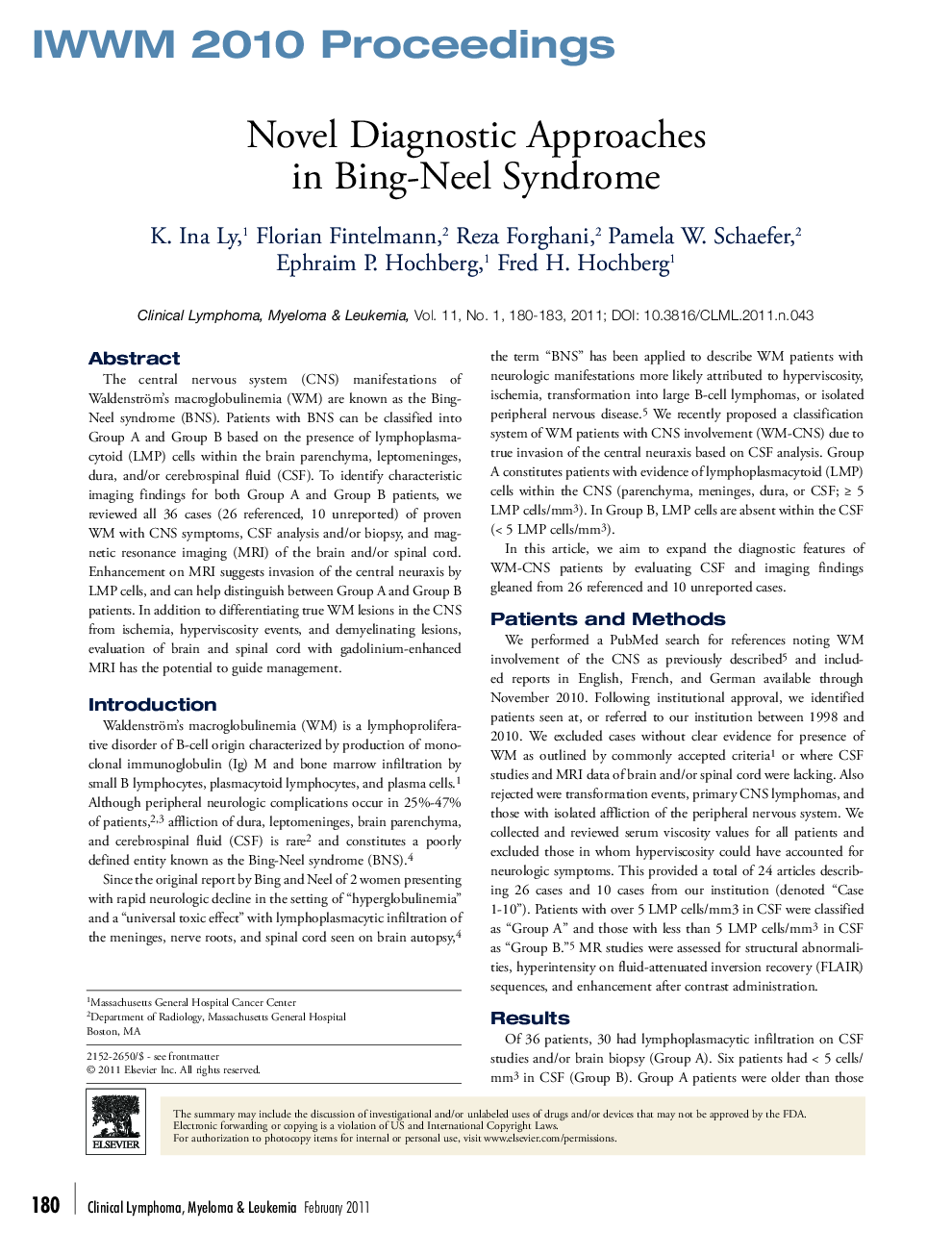| Article ID | Journal | Published Year | Pages | File Type |
|---|---|---|---|---|
| 2755127 | Clinical Lymphoma Myeloma and Leukemia | 2011 | 4 Pages |
The central nervous system (CNS) manifestations of Waldenström's macroglobulinemia (WM) are known as the Bing-Neel syndrome (BNS). Patients with BNS can be classified into Group A and Group B based on the presence of lymphoplasmacytoid (LMP) cells within the brain parenchyma, leptomeninges, dura, and/or cerebrospinal fluid (CSF). To identify characteristic imaging findings for both Group A and Group B patients, we reviewed all 36 cases (26 referenced, 10 unreported) of proven WM with CNS symptoms, CSF analysis and/or biopsy, and magnetic resonance imaging (MRI) of the brain and/or spinal cord. Enhancement on MRI suggests invasion of the central neuraxis by LMP cells, and can help distinguish between Group A and Group B patients. In addition to differentiating true WM lesions in the CNS from ischemia, hyperviscosity events, and demyelinating lesions, evaluation of brain and spinal cord with gadolinium-enhanced MRI has the potential to guide management.
